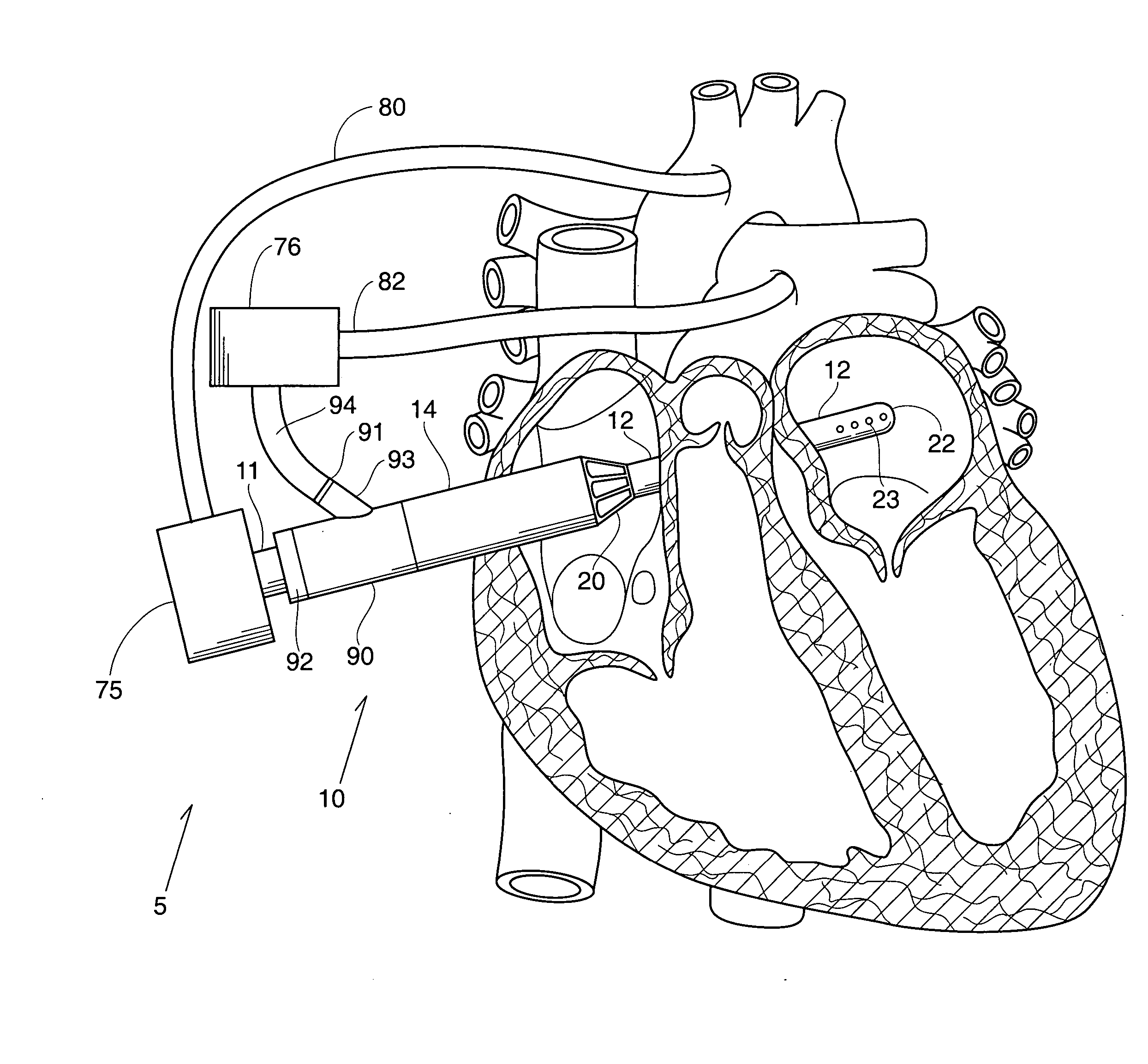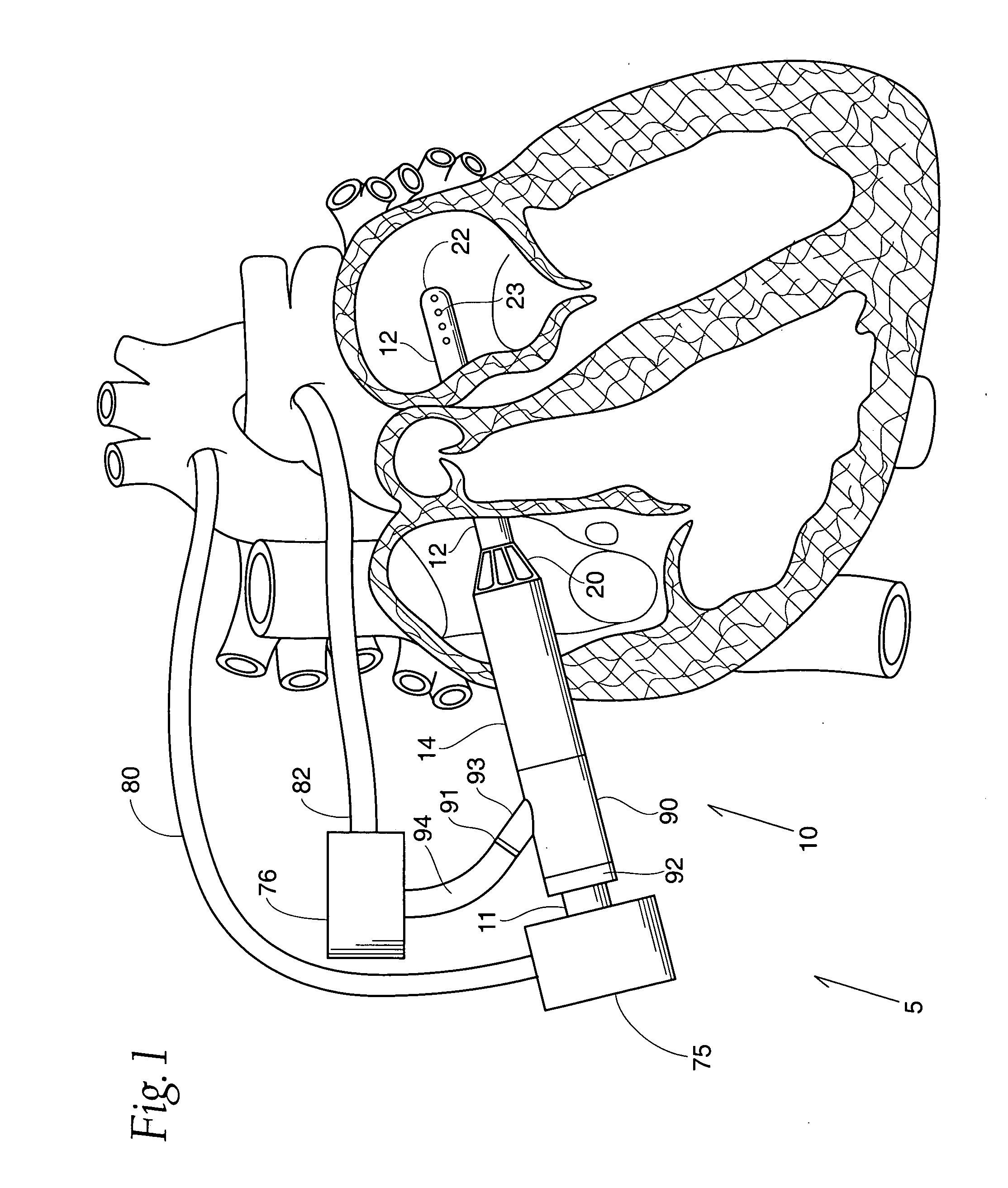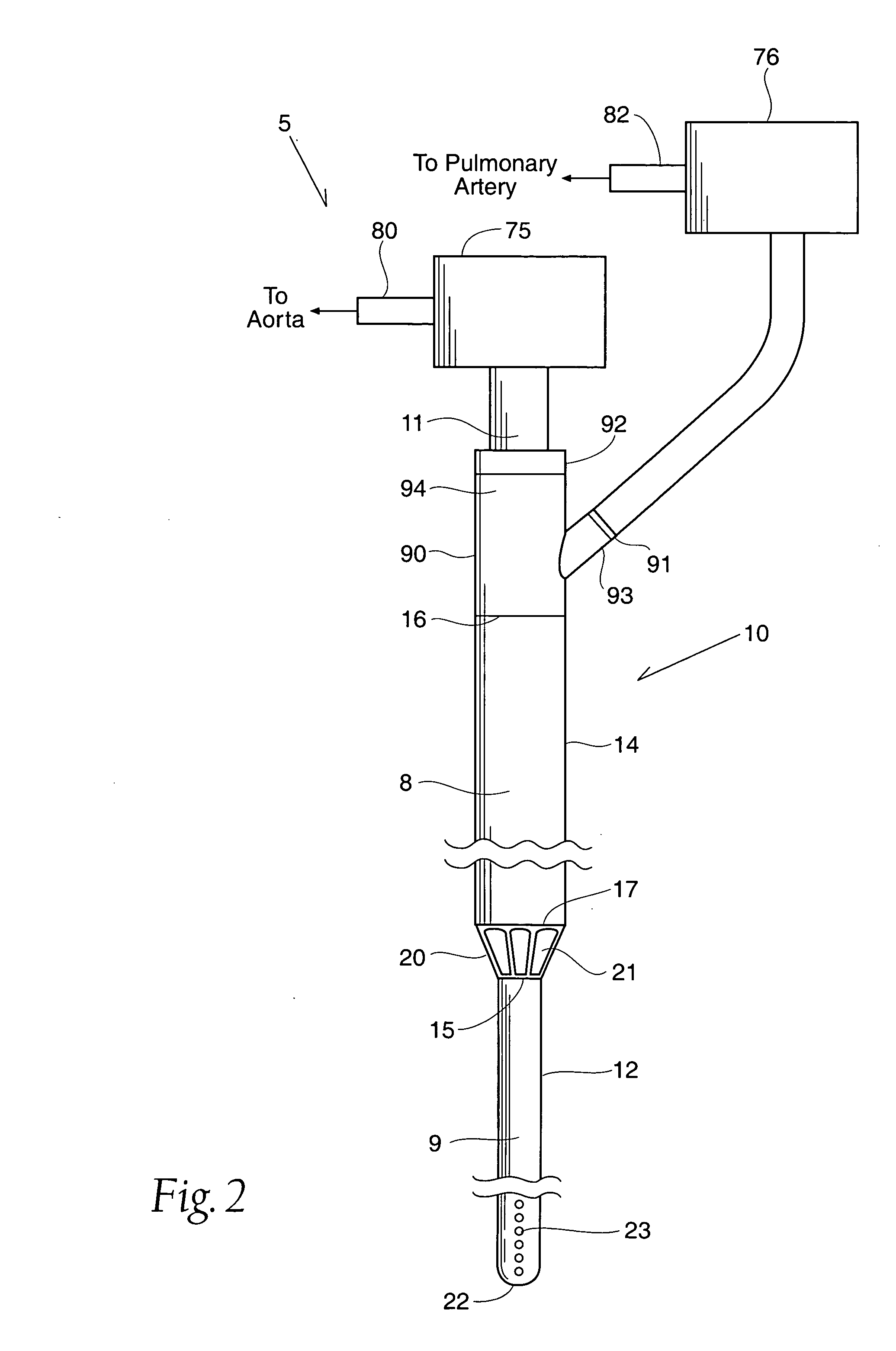Left and right side heart support
a heart support and left and right side technology, applied in the field of cannulas, can solve the problems of reducing oxygenation abilities, reducing oxygenation abilities, and reducing the oxygenation capacity of patients, so as to reduce hemolysis, minimize the extent, and strengthen the immune system.
- Summary
- Abstract
- Description
- Claims
- Application Information
AI Technical Summary
Benefits of technology
Problems solved by technology
Method used
Image
Examples
Embodiment Construction
[0040] The present invention involves a method and apparatus for providing full or supplemental support for the heart during cardiac surgery. Referring to FIG. 1, a cannulation system 5 according to one embodiment of the present invention is provided comprising a coaxial cannula assembly 10 having an outer cannula 14 extending into the right atrium of a patient's heart, and an inner cannula 12 disposed generally coaxailly within an outer cannula 14 and extending through the atrial septum into the left atrium. As will be explained in greater detail below, the coaxial cannula assembly 10 has an inner flow path defined by the lumen within the inner cannula 12, and an outer flow path defined by the annular channel extending between the interior surface of the outer cannula 14 and the exterior surface of the inner cannula 12. The inner cannula 12 is communicatively coupled to a blood pump 75 such that oxygen-rich blood from the left atrium may be withdrawn via the inner flow path and rer...
PUM
 Login to View More
Login to View More Abstract
Description
Claims
Application Information
 Login to View More
Login to View More - R&D
- Intellectual Property
- Life Sciences
- Materials
- Tech Scout
- Unparalleled Data Quality
- Higher Quality Content
- 60% Fewer Hallucinations
Browse by: Latest US Patents, China's latest patents, Technical Efficacy Thesaurus, Application Domain, Technology Topic, Popular Technical Reports.
© 2025 PatSnap. All rights reserved.Legal|Privacy policy|Modern Slavery Act Transparency Statement|Sitemap|About US| Contact US: help@patsnap.com



